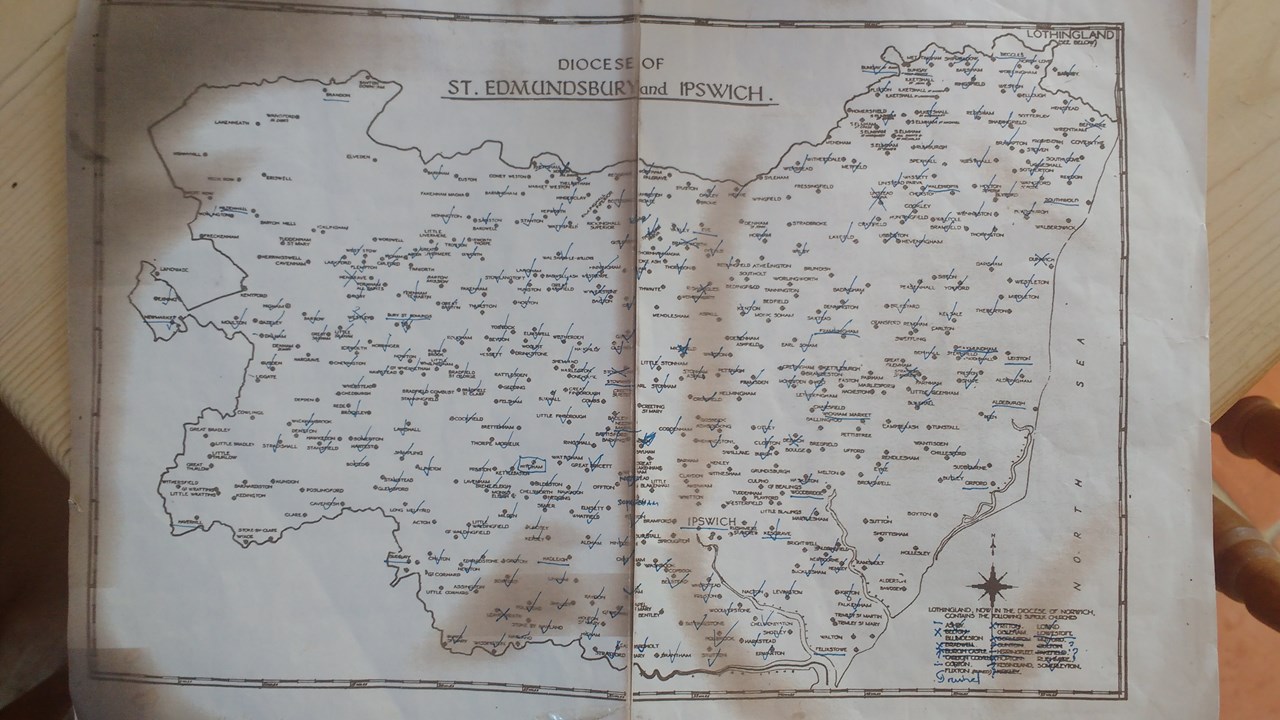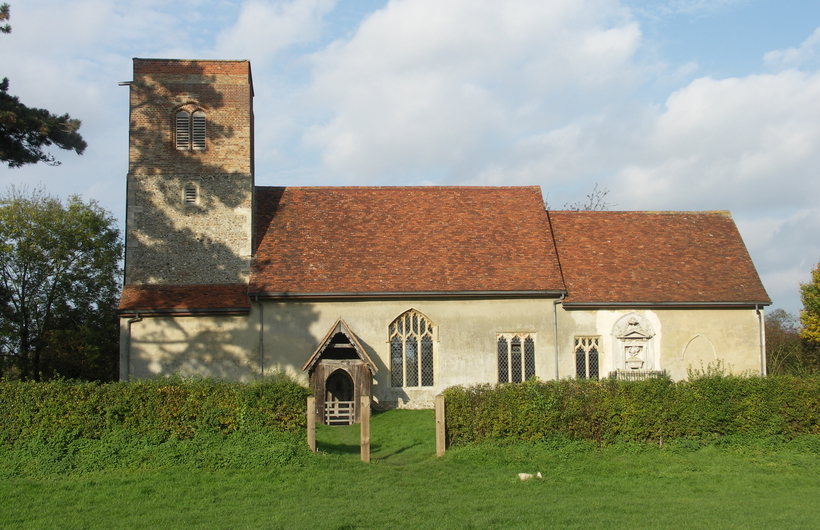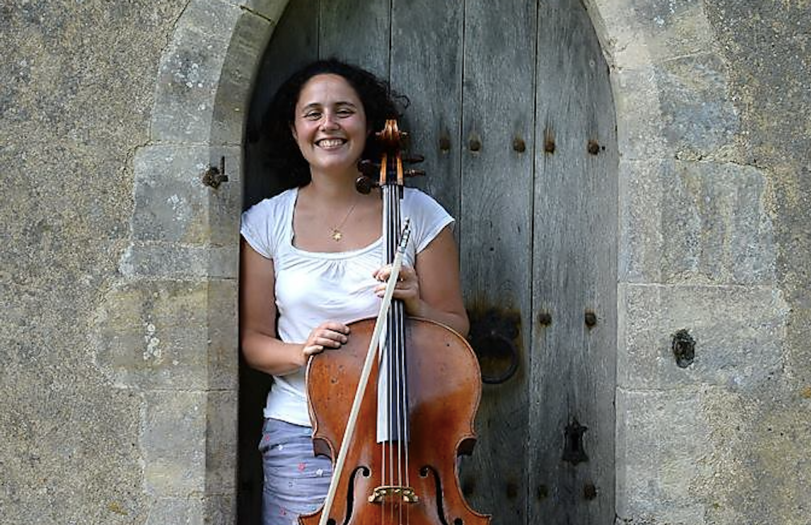Cellist Yalda Davis plays more than 400 medieval Suffolk Churches
Yalda’s earliest memories of Suffolk churches are from visiting them with her father. Travelling by car when she was little, but as she got older, would go on bike rides punctuated by village churches. Her mother had forgotten how to ride a bike, and no doubt she had good reason to keep it that way in order to maintain her most convincing excuse for a peaceful afternoon without the children.
Yalda Davis is the daughter of Sir Colin Davis, Principal Conductor of the London Symphony Orchestra, and Director Music at the Royal Opera House. Sorting the many bookshelves after her father died, she found a large number of church guides from around the county of Suffolk. Many of them she had no memory of visiting with him, and perhaps never did: just as likely, though, they may have been visited when she was too small to remember.
The musical acquaintance with Suffolk churches began a little later for Yalda. Wattisham was the first Suffolk church concert at the age of 13. Playing the Schubert string quintet with all but one of her siblings, an expansive and heartbreakingly beautiful work that her father had always hoped they would play together one day, given they had the right combination of instruments: two violins, one viola and two cellos. It was an early evening fundraising concert around the winter solstice – in hindsight, quite a feat for the organisers and players alike, considering the church’s lack of heating and electricity. The tiny church was full, and the evening a success. It was her first unforgettable musical performance.
Sometimes on her recent excursions around Suffolk, when Yalda has stopped at churches in nearly every village she has passed, she never failed to be astounded by their uniqueness and beauty; she started to think about whether it might be possible to visit all of them, as a way of getting to know Suffolk better and discovering hidden places and beautiful buildings she would not otherwise find. Then, she remembered that friends often took part in the annual Suffolk Historic Churches Trust bike ride. The idea came to her: rather than just visiting, she could aim to play the cello in all the historic churches of Suffolk. This would add another dimension to the visits, and create a more personal, more memorable relationship with each church.
It was a coming together of many strands of interest – Suffolk and its countryside, history and architecture; music, and writing.
But how many medieval churches there are in the county? Perhaps a guess of 150 or 200? Little did Yalda know that Suffolk has one of the densest populations of medieval churches in England…
Her research indicated that ‘Norfolk and Suffolk contain 1 in 8 of all medieval churches in England’, and so on. After taking down several books on Suffolk churches from her friends’ bookshelf, she quickly found a figure of 505 ‘churches of medieval foundation’.

Still it seemed far too many to contemplate. If she played the flute, that would be one thing. It wouldn’t be difficult to take the instrument along on any excursions, and could even cycle. But a cello restricts nearly all other activities as it cannot be packed in a bag, nor left in a car, nor taken on a bike. Nor is it very discreet, should stealth be required on any occasion. Not that this expected to be necessary, since the plan was to play if a church was empty, but neither was the plan to ask anyone’s permission and so feeling inconspicuous would have been preferable. Her purpose would have to be to go out for the day with the sole intention of playing the cello in churches – no walks, no dawdling, unless visiting an area where a friend happened to live and would allow her to leave the cello for a few hours.
This exercise clarified that the number of churches could be reduced by excluding, for now at least, town and city churches – 46 in total – It is the villages and the hidden churches that interested Yalda most.
After a process of elimination of ruined churches, boundary changes that moved some over into Norfolk, and a few other reasons, the number remaining was 430. This is still a phenomenal number of churches and would take years rather than months to visit; longer because of the cello. She want to find all the obscure corners of Suffolk, and any further exclusion criteria might cause her to miss some of the beautiful churches in the county.

The project started in April 2017; Yalda’s astonishment at the beauty and uniqueness of all the churches she stopped to visit on a journey to the coast was the next stage… deciding that the cello was the last, entirely personal, piece of the puzzle to fall into place.
Yalda has now visited 423 churches, will continue to visit after lockdown, and is planning to record a CD of solo cello music in the CCT's medieval church in St. Mary's, Badley this summer, in time for the completion of her project in September (coronavirus permitting). It will include two Bach cello suites and a commissioned piece by Benjamin Ellin.

The project will finish on 26th September 2020 with a concert in St Bartholomew’s church, Orford, which will be the very last Suffolk church on this tour.
The funding target to produce a CD of Yalda’s performances has now been achieved by 124 supporters, who raised more than £6,500. This means that not only will the CD recording be made, the organisational expenses for the final concert at Orford church will be covered too.
All of the ticket proceeds from the concert will go to charitable causes:
- The Suffolk Historic Churches Trust and Orford Church.
- Suffolk Wildlife Trust
- The Churches Conservation Trust, which looks after 20 churches in Suffolk, will also benefit from this project, through a donation from each CD sold.
Yalda thanks the CCT for all the enthusiasm and support of her project in difficult times and is overwhelmed by everyone’s generosity, kind words, faith and encouragement.
To read more about the project visit Yalda's blog, and you can donate on Just Giving.

